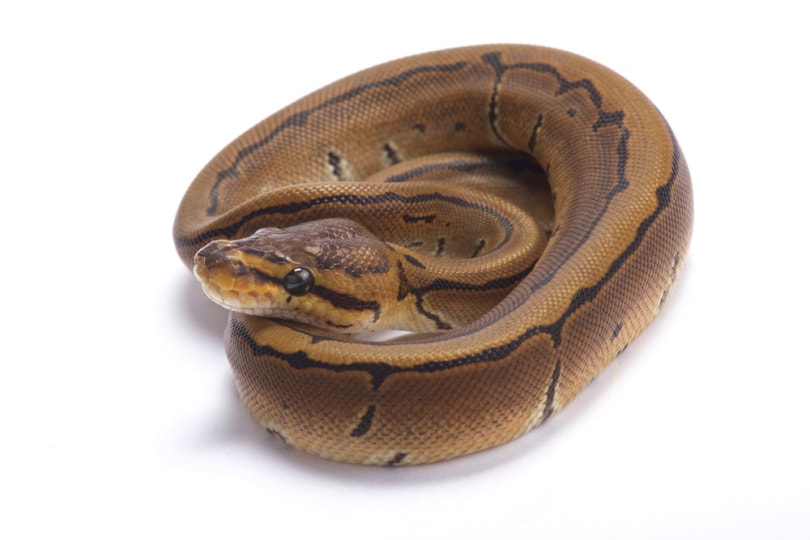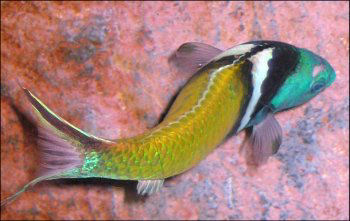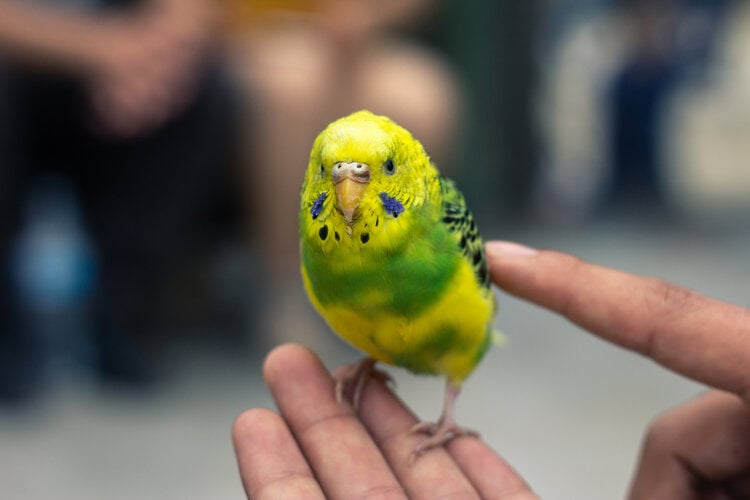Click to Skip Ahead
The ball python is currently the most popular pet snake in the United States, and a big part of the reason is that breeders can selectively breed so many different colors and patterns that you are sure to find something you like. One of the most attractive types is the Pinstripe Ball Python. If you have had your eye on one of these snakes for a while and would like to learn more about them, keep reading while we look at cost, habitat, lifespan, and more to help you make an educated purchase.

Quick Facts About the Pinstripe Ball Python Morph
| Species Name: | P. regius |
| Common Name: | Pinstripe Ball Python |
| Care Level: | Moderate |
| Lifespan: | 20 – 30 years |
| Adult Size: | 3 – 5 feet |
| Diet: | Mice, rats |
| Minimum Tank Size: | 40 gallons |
| Temperature & Humidity: | 75 – 80 degrees Fahrenheit 45% – 75% |

Do Pinstripe Ball Pythons Make Good Pets?
Your Pinstripe Ball Python will make a fantastic pet. It has an attractive pattern, and its habitat is not hard to maintain after setting it up. The snake is not venomous and doesn’t mind if you carry it around your home. It moves slowly, so it’s less likely to scare inexperienced users with sudden movements and is a good choice for children.
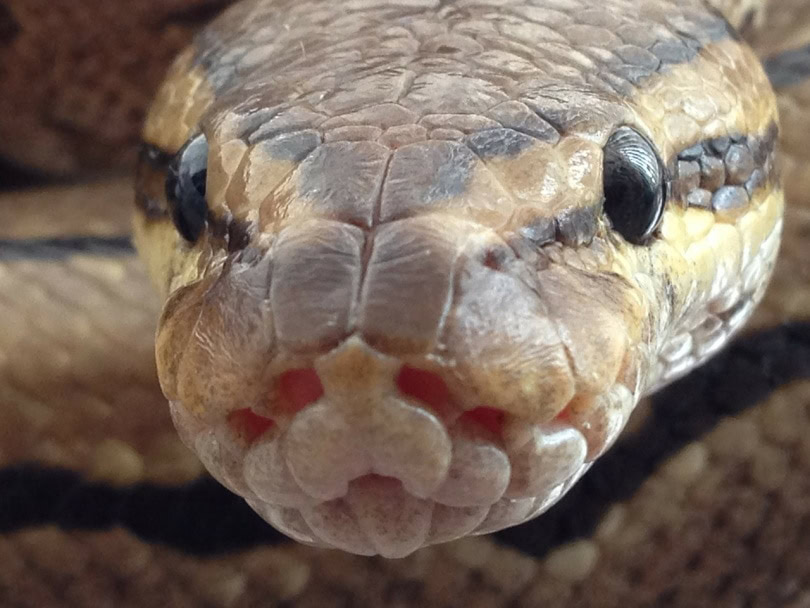
Appearance
The Pinstripe Ball Python is an attractive snake with standard colors but with reduced dark pattern elements causing the snake to look more like a solid color. But it will have thin pinstripe lines. It usually grows to between 3–5 feet, with the female getting considerably larger than the male.

How to Take Care of Pinstripe Ball Pythons
Habitat, Tank Conditions & Setup
Tank
Your Pinstripe Ball Python will require a 40-gallon aquarium when fully grown. You will need to place some hides inside where your snake can retreat from the public and the heat. There should be at least one on each side of the tank, and they should be large enough to fit the whole snake. Live plants and branches can also help create a natural environment for your snake while looking attractive in your home.
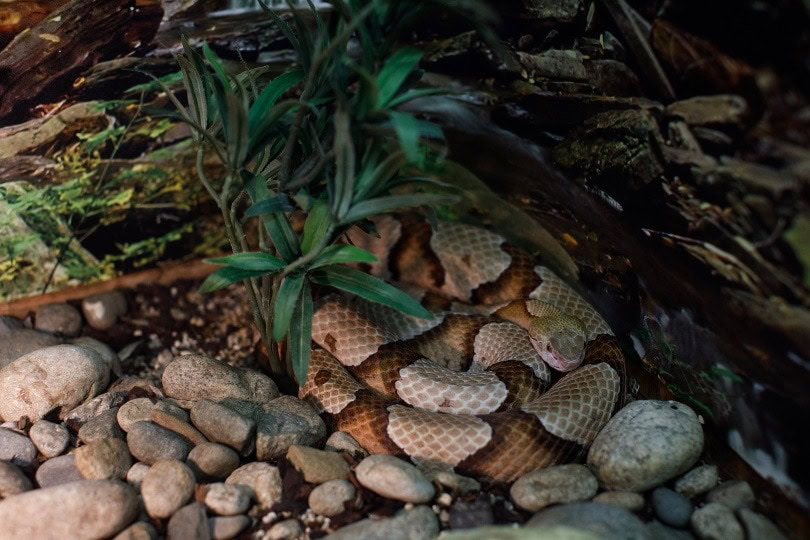
Lighting
Your Pinstripe Ball Python is a nocturnal animal, so it won’t need any special lighting. However, it will require a day-night cycle of about 12 hours on and 12 off. If you can control the lights manually, you will need to use a timer.
Heating (Temperature & Humidity)
Temperature
Your Pinstripe Ball Python will require the temperature in its habitat to be in the high 70s most of the time. Since you won’t be using heat lamps, it’s best to increase the temperature with ceramic or infrared heaters that can turn on and off automatically to regulate temperature.
- Related Read: Do Ball Pythons Need a Heat Lamp?
Humidity
Your Pinstripe Ball Python will be happiest when humidity levels are between 45% and 75%. Luckily most homes fall into the range naturally, so you won’t need to do much to keep it within limits. The higher temperatures and heaters can dry out the air, so you will need to replace humidity using a spray bottle. When your snake is shedding, you will want to increase the moisture to 75% to help make the shedding easier.
Substrate
Coconut fiber is the popular choice as a substrate for your ball python because it helps retain humidity and will work to keep your snake’s habitat more consistent. Leaf litter on top can provide more texture for your snake to explore through, but it is unnecessary, especially if you have lots of branches and live plants.
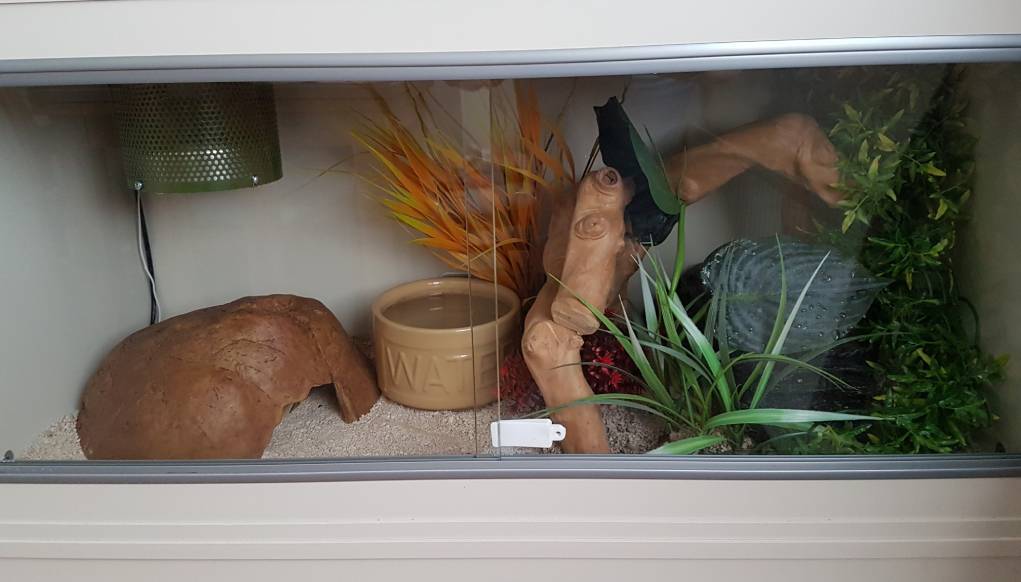
Tank Recommendations
| Tank Type: | 40-gallon glass vivarium |
| Lighting: | Standard, 12-hour cycle |
| Heating: | Heating pad/tape on the bottom of the enclosure |
| Best Substrate: | Coconut fiber bedding |

Feeding Your Pinstripe Ball Python
When your Pinstripe Ball Python is small, you will feed it pre-killed or frozen mice. As soon as your snake is large enough to switch to rats, we recommend making the switch because pythons get used to one kind of food and often refuse to change. If you continue to feed mice, you will need many mice, and feeding your snake can become a big job. Rats are much larger and provide a complete meal, allowing you to have fewer feedings.
Diet Summary
| Fruits: | 0% of the diet |
| Insects: | 0% of diet |
| Meat: | 100% of diet – small/medium-sized rodents |
| Supplements Required: | N/A |

Keeping Your Pinstripe Ball Python Healthy
Keeping your Pinstripe Ball Python healthy is relatively easy as long as you keep temperature and humidity within limits and remember to increase the humidity when you notice your snake shedding. Since your snake eats its food whole, it gets all of the calcium from the bones many other reptiles need to supplement.
Common Health Issues
The biggest health issue associated with your Pinstripe Ball Python is inclusion body disease (IBD). It’s a condition popular in all ball python varieties and is caused by a virus. This disease spreads quickly among snakes and can even travel through the air. Luckily, your snake will need to be near an infected snake to catch it, so IBD is not something your snake will come down with if it spends all its time alone in a cage.
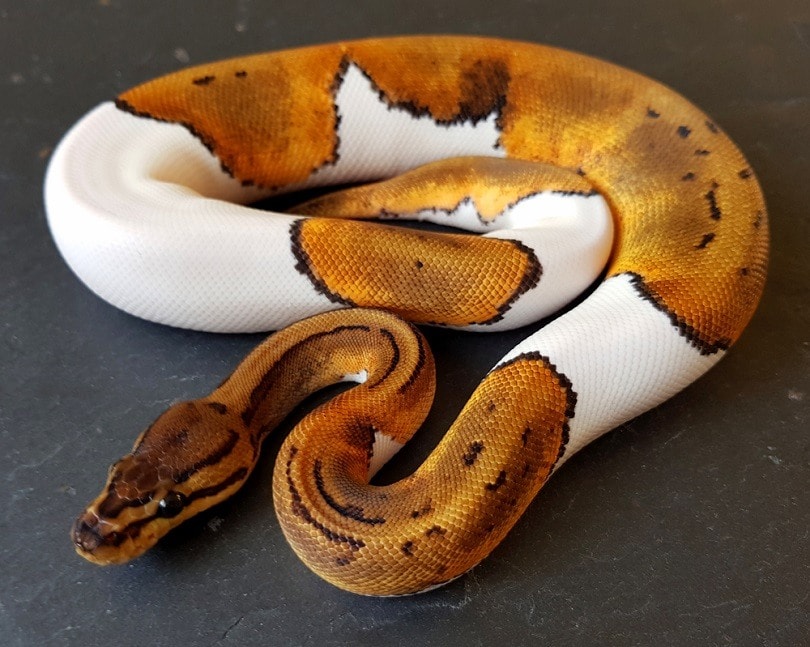
Lifespan
Like most of the other morphs, Pinstripe Ball Pythons have a long lifespan that often reaches 30 years, and in many cases, the snakes live even longer.
Breeding
Breeding ball pythons is not difficult and only requires placing a male and a female together and giving them some time. However, creating a Pinstripe Ball Python requires a solid knowledge of genetics and selective breeding, so it’s best to leave it to the experts.

Are Pinstripe Ball Pythons Friendly? Our Handling Advice
The Pinstripe Ball Python, like all other pythons, is a slow-moving snake that doesn’t mind if you carry it around. Start slow when the snake is still small and hold it for a few minutes each day, increasing the time if your snake looks comfortable. The only time you don’t want to pick it up is after it’s eaten or when it’s shedding its skin.
Shedding & Brumation: What to Expect
Your Pinstripe Ball Python will shed its skin every few weeks, and you will want to increase humidity and make sure there are plenty of rough surfaces your snake can rub on to help break free of the skin.
Brumation occurs when the temperature gets cold, and it causes the snake to go into a type of hibernation. Keeping the temperatures warm in your habitat will prevent the snake from going into brumation.
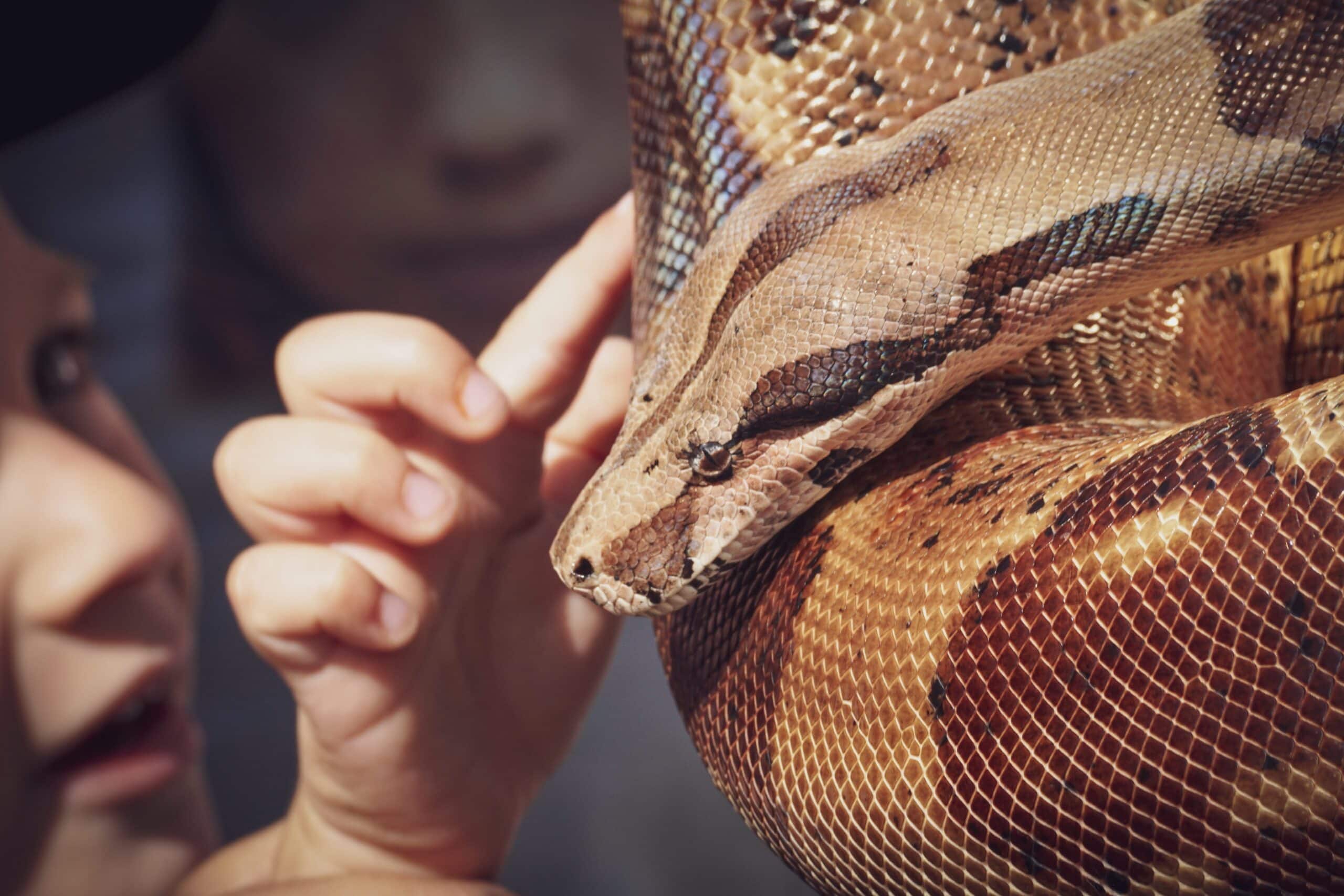
How Much Do Pinstripe Ball Pythons Cost?
You can expect to pay between $100 and $600 for your Pinstripe Ball Python, depending on what breeder you choose. Cost can fluctuate depending on the availability of the morphs that create the pinstripe effect.
Care Guide Summary
- Docile nature
- Slow-moving
- Simple diet
- Expensive
- Rare
- You May Also Want to Read: Fascinating and Fun Ball Python Facts

Final Thoughts
The Pinstripe Ball Python is an excellent pet for experienced and beginner snake owners. Its relaxed, slow-moving behavior makes it less likely to scare people who are new to handling snakes. It eats a simple diet and doesn’t require difficulty to create a habitat. In fact, some people may require no extra heat or lights at all if they live in a warm climate, and the long 30-year lifespan is far beyond what most other pets offer.
We hope you have enjoyed reading over our look into these attractive animals and have learned some new facts. If we have convinced you to purchase one of these snakes for your home, please share this guide to the Pinstripe Ball Python on Facebook and Twitter.
Featured Image Credit: reptiles4all, Shutterstock
